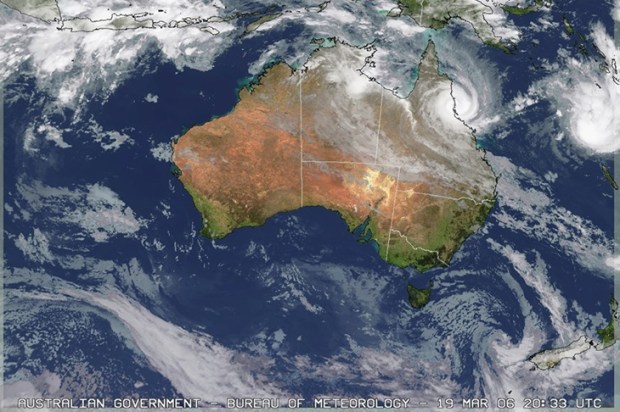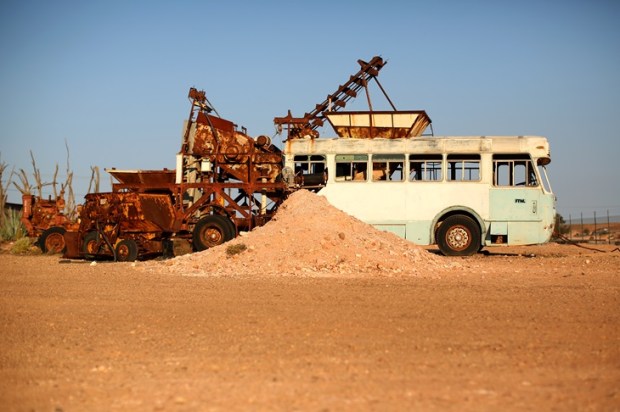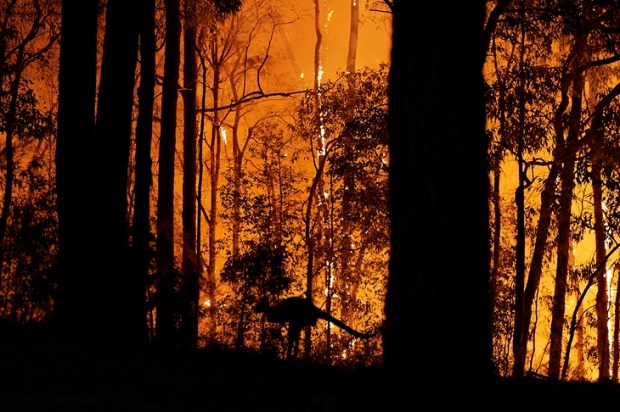The other night my wife and I sat down to a nice candle-lit dinner and a glass of wine, but it wasn’t a special anniversary or any other celebration. We did without the usual diversion of TV news in the background, or any romantic mood music to enhance the flickering naked flames.
All we had was ‘the sound of silence’ resulting from a sudden power blackout.
There was no violent storm, only a late afternoon rain squall and a brisk south-easter blowing in from the sea, but the blackout lasted for about an hour.
Fortunately, our chicken dinner was prepared on our gas-top stove, no problem. Others relying on electric ovens, cook-tops, and microwaves would have had to wait. It provided a reminder of where Australia is headed with its mad rush to renewable energy and the demonisation of coal and gas.
We are constantly told renewables are the cheapest form of energy, but that flies in the face of ever-increasing power bills as the federal and state governments struggle to push their agendas on a gullible public. Energy Minister Chris Bowen regularly gets fired up as he waves his arms about like one of his pet wind turbines while quoting a CSIRO report claiming that solar and wind really are the cheapest options.
But that report has been widely criticised for omitting a huge black hole – the cost of providing up to 28,000 km of new transmission lines, battery backups, pumped hydro storage, land acquisitions, and other necessary infrastructure.
Before the last election, Federal Labor estimated the cost of its 2030 renewable electricity target of 82 per cent at $78 billion. However, a report by Professor Robin Batterham and expert group Net Zero Australia, this year estimated it at a whopping $1.5 trillion!
Meanwhile, in its latest report, the Australian Energy Market Operator (AEMO) warned of the likelihood of rolling blackouts with the return of an El Niño weather pattern bringing a hot, dry summer with more wind-less days.
Minister Bowen also insists nuclear energy must remain a too-expensive no-no, but anyone with an internet connection can see that many overseas countries are embracing nuclear as a more reliable and cheaper way of achieving Net Zero emissions. Even globe-trotting Greenie Greta Thunberg recently claimed Germany had ‘made a mistake’ in shutting down its nuclear power plants in favour of renewables. Germans and residents of other struggling EU nations now rely on France, Europe’s largest electricity exporter, to make up for shortages.
Sacre bleu, Mr Bowen! Nuclear plants provide about 70 per cent of France’s energy mix, in tandem with its vineyards, wineries and cheese factories. It’s far from being a dystopian radio-active wasteland.
But don’t take my word for it. Opposition Energy Spokesman Ted O’Brien recently raised some valid points in making the case for emerging nuclear technology, including small modular reactors (SMRs) and microreactors (nuclear batteries).
He said Bowen argues that any nuclear technology Australia could adopt isn’t commercialised.
‘A number of Generation III+ reactors are already fully commercialised and in operation today, including at least one SMR, and up to 50 more are coming to market. Bowen claims nuclear is slow to build and disputes whether a plant could be operating in Australia by the mid-2030s.
‘The latest adopter of nuclear energy, the United Arab Emirates, progressed from idea to commercialisation within the same timeframe that Bowen argues is impossible for Australia…
‘Data from the International Energy Agency and OECD shows that nuclear in an energy mix lowers power bills. Bowen criticises Ontario, Canada, but fails to acknowledge that with up to 60 per cent nuclear in its grid, its power bills are half the price we pay in Australia.
‘Nuclear energy produces zero emissions… With a capacity factor over 90 per cent, nuclear can provide synchronous baseload supply 24/7, which is why it’s a like-for-like replacement for retiring coal plants…
‘If the Liddell power plant were replaced by a nuclear plant with the same capacity, it could be comfortably located on the same 100ha site. By contrast, an equivalent renewables-only solution would need a solar farm spanning about 35,000 hectares, or a wind farm spread over 200,000 hectares, with a huge impact on the natural environment…’
This explains growing opposition from odd allies, farmers and environmentalists, to the resumptions and land clearing making way for huge solar farms, massive wind turbines, and their associated transmission lines through native forests and productive farmland. Proposals for offshore wind farms in the path of migratory whales off the East Coast have also faced strong resistance.
The ABC recently reported that renewable energy advisory body, Nexa, and global analyst Rystad Energy, had found Australia’s green energy share was likely to be barely 60 per cent by 2030.
Former Snowy Hydro boss Paul Broad put it more bluntly: ‘The notion that you’re going to have 80 per cent renewables in our system by 2030 is, to use the vernacular, bullshit. You can’t. This transition, if it ever occurs, will take 80 years, not eight.’
According to the Australian Financial Review, Snowy Hydro 2 will need an injection of an additional $3 billion as its latest cost blows out to $12 billion. When it was announced by former Liberal Prime Minister Malcolm Turnbull, it was estimated to cost just $2 billion.
The concept of using power to pump water uphill to generate power when it runs back downhill seemed to me like a very expensive dog chasing its very expensive tail. Now with one of the big tunnelling machines trapped underground for months, it seems that dog hasn’t even left its over-priced kennel.
And there’s a big elephant in the room which both Labor and the Opposition seem oblivious to as they remain on the Net Zero train. Is it all necessary, apart from virtue signalling?
The science is nowhere near settled, there is no ‘consensus’.
One of 1,600 scientists and professionals signing a declaration stating: ‘There is no climate emergency,’ US Nobel Prize Laureate John Clauser, has said that climate models used by the IPCC and others ignore one key variable factor – clouds.
‘Clouds play a paramount role in regulating the Earth’s temperature, serving as a cloud-sunlight-reflectivity thermostat that controls the climate, controls the temperature of the Earth, and stabilizes it very powerfully and very dramatically,’ he claimed.
Mr Clauser pointed out that satellite images consistently show wide variances in cloud cover, which can span anywhere from five to 95 per cent of the Earth’s surface.
This ‘thermostat’ mechanism has a vastly greater influence on Earth’s temperature than the effect of CO2 or methane. He presented preliminary calculations suggesting the impact of this cloud-reflectivity mechanism might overshadow CO2’s influence by up to 200 times…
Professor Ian Plimer has also highlighted the effect of volcanoes on climate and weather in a Spectator Flat White article, including this:
‘The underwater eruption from the Pacific Ocean volcano in … Tonga occurred on 15 January 2022. NASA published satellite time-lapse footage showing a column of water rising 50 km to the stratosphere. The volume of water … was 10 per cent of all the water in the stratosphere. As a result, Eastern Australia had numerous rain bombs in 2022 and 2023. Elsewhere in the world, there were rain bombs and large snowfalls…’
There are other natural factors affecting climate and weather including ocean currents, variation in solar orbits, gradual movement of the magnetic poles, and measured against these, carbon dioxide emissions are a minor player. Former Chief Scientist Alan Finkel told a Senate hearing several years ago that if Australia immediately cut all its CO2 emissions, the effect on world climate would be negligible.
Regardless of all that, Australians know better when it comes to climate change and power generation, while still embracing the AUKUS deal and eventually obtaining nuclear submarines which will be serviced and maintained in Australian ports. Great logic, Albo and Bowen!
John Mikkelsen is a former editor of three Queensland regional newspapers, columnist, freelance writer and author of the Amazon Books Memoir, Don’t Call Me Nev.

























